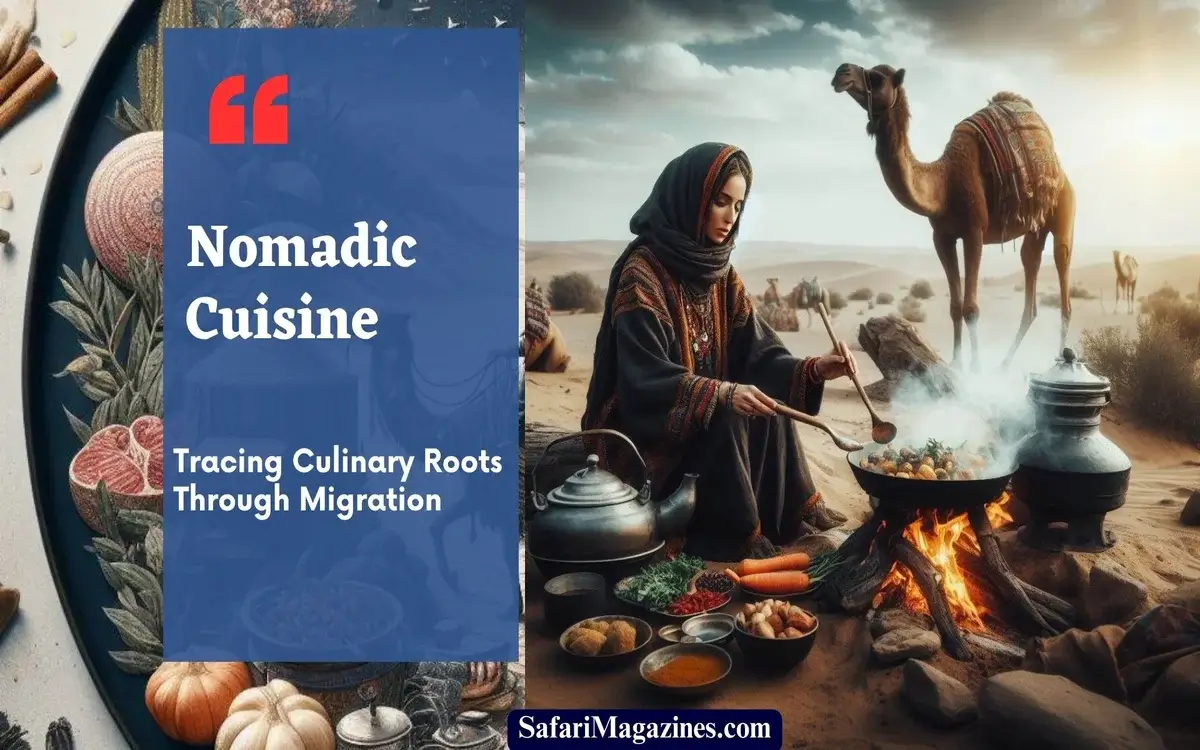
Nomadic Cuisine, Tracing Culinary Roots Through Migration. Embark on a gastronomic journey as we delve into the enchanting world of “Nomadic Cuisine: Tracing Culinary Roots Through Migration.” So, this culinary expedition transcends borders, unraveling the rich tapestry of flavors that nomadic communities have woven across continents.
Table of Contents
ToggleUnderstanding the Nomadic Culinary Journey
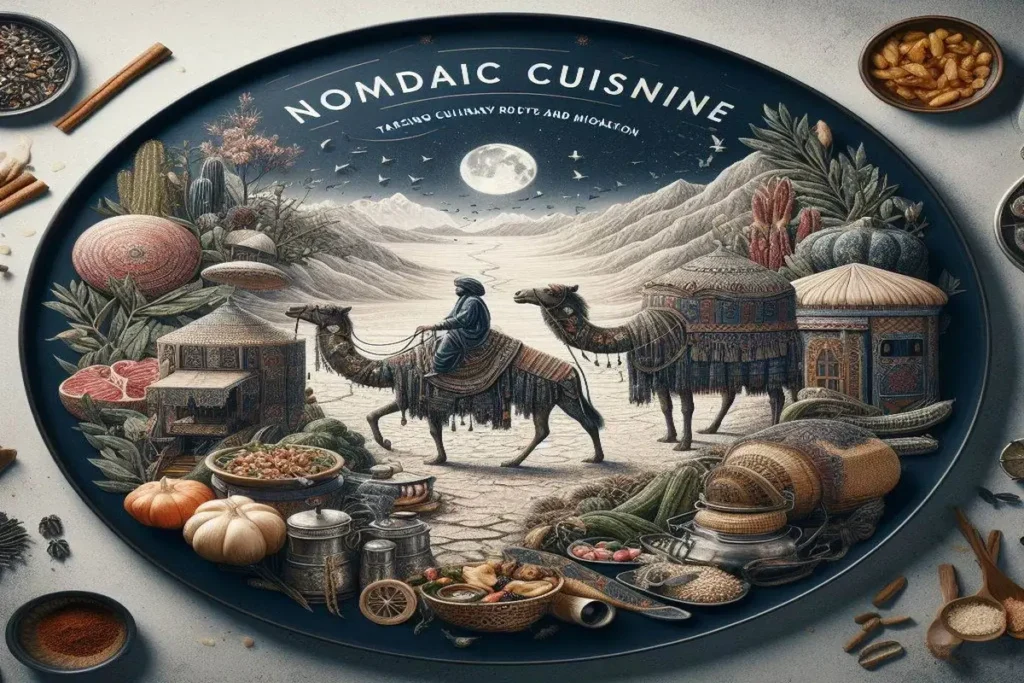
Nomadic cuisine is a testament to the resilience and adaptability of communities on the move. Therefore, it reflects the amalgamation of diverse culinary traditions, creating a global tapestry of flavors shaped by migration.
The Culinary Trail of Nomadic Communities

Explore the fascinating culinary trail left behind by nomadic communities. So, from the ancient Silk Road to the African savannah, follow the footprints of nomads as they carried their culinary heritage across terrains.
Migration’s Impact on Culinary Diversity
Migration has been a driving force in shaping culinary diversity. From the Silk Road to the nomadic tribes of Africa, the exchange of culinary practices has enriched the world’s food heritage.
Migration Flavors: How Travel Shapes Food Traditions
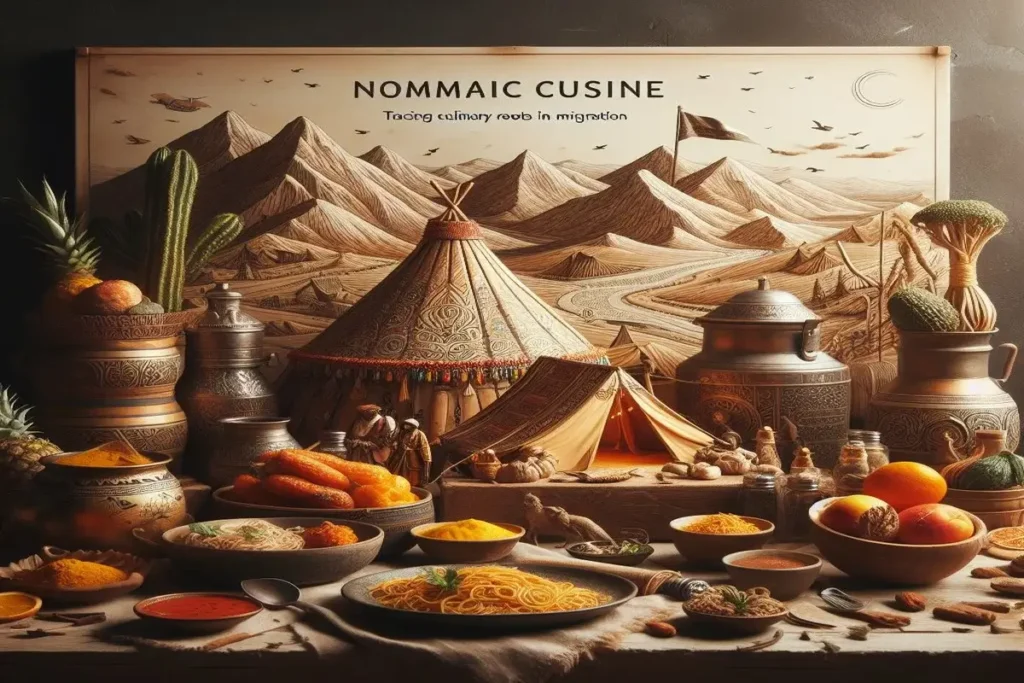
Delve into the profound impact of travel on food traditions. Discover how the nomadic journey shapes flavors, creating a dynamic interplay between different culinary practices and regional ingredients.
Continue reading: Nomadic Cuisine: Tracing Culinary Roots Through Migration.
Culinary Adaptations
Nomadic communities adapt their culinary practices to local ingredients, creating a dynamic fusion of flavors. For that reason, the nomadic journey becomes a culinary adventure, with each migration adding a layer to the evolving tapestry of taste.
Staple Nomadic Ingredients
Explore a global palette of nomadic flavors, from the spices of the Middle East to the hearty grains of the Mongolian steppes. So, these staple ingredients showcase the diversity and richness of nomadic culinary traditions.
Cultural Influences

Nomadic cuisine is a living testament to cultural exchange. So, discover how nomadic traditions have influenced modern cuisines, creating a harmonious blend of flavors that transcend borders.
Nomadic Fusion Delights
The concept of culinary syncretism comes to life as nomadic communities fuse their traditional recipes with local ingredients, giving birth to unique and delightful dishes that resonate across cultures.
Culinary Anthropology
Unravel the anthropological aspects of nomadic cuisine, exploring the rituals, traditions, and significance attached to food in nomadic communities.
Continue reading: Nomadic Cuisine: Tracing Culinary Roots Through Migration.
Seasonal Nomadic Menus

Nature plays a pivotal role in nomadic cuisine, shaping seasonal menus that showcase the connection between the nomadic lifestyle and the environment.
Nomadic Street Food
Embark on on-the-go culinary adventures with nomadic street food. So, explore the flavors of the bustling souks where nomadic communities share their culinary heritage with the world.
Nomadic Rituals
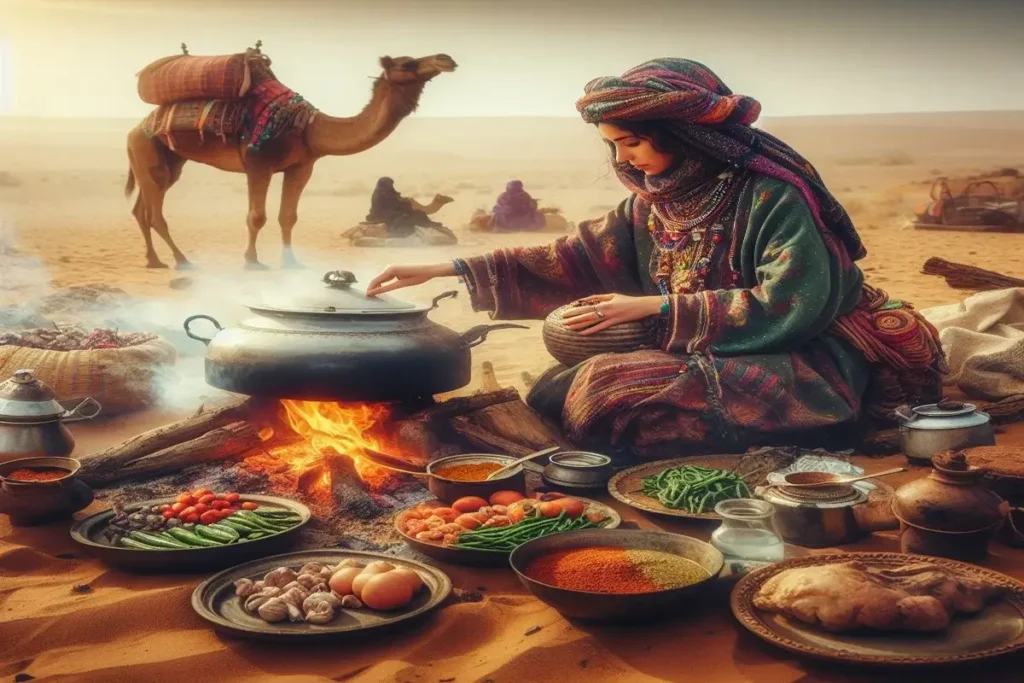
Beyond the plate, nomadic rituals associated with food offer a glimpse into the cultural significance of culinary practices. From communal feasts to celebratory meals, nomadic rituals tell a tale of unity and tradition.
Culinary Sustainability
Nomadic practices often align with sustainability, showcasing a deep connection with the environment. So, explore how nomadic communities strive for a balance between culinary traditions and environmental impact.
Continue reading: Nomadic Cuisine: Tracing Culinary Roots Through Migration.
Iconic Nomadic Dishes
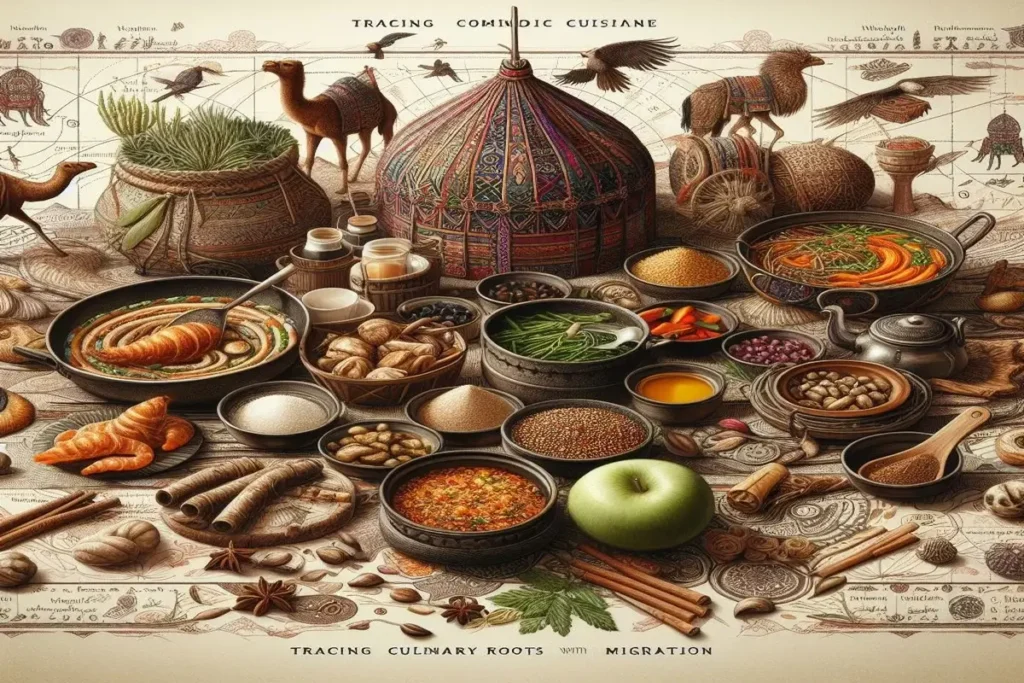
From the steppes to your plate, savor the essence of nomadic cuisine through iconic dishes that have stood the test of time. So, each dish tells a story of migration, resilience, and culinary artistry.
Modern Nomadic Chefs
Meet the culinary torchbearers of nomadic traditions. For example, modern nomadic chefs carry forward the legacy, infusing innovation into traditional recipes and presenting them to a global audience.
Nomadic Cuisine’s Future
In a globalized world, nomadic cuisine continues to evolve. So, discover the future trends and emerging flavors that will shape the culinary landscape, celebrating the timeless spirit of migration.
Read more;
- Cultural immersion through culinary adventures
- Heritage Conservation: Preserving the Architectural Tapestry
- Cultural Exchanges: Homestays and Local Connections
- Digital Detox Destinations: Unplug from Technology and Reconnecting with Nature
- Traditional Indian Food Recipes: Learn How to Cook Indian Dishes
- Nomadic Cuisine: Tracing Culinary Roots Through Migration
- Greek Food: Top 10 Traditional Dishes and Recipes of Greece
- Traditional Indian Cuisine: Discover the Foods and Dishes of India
- Alternative Festivals: Exploring Unconventional Celebrations
- Popular Dances Around the World: A Comprehensive Guide
- Foods to Avoid While Traveling: Top 10 What Not to Eat
- Best Foods to Eat While Traveling: Top 15 Healthy Travel Items
Conclusion
As we conclude this culinary journey, let’s celebrate the richness of nomadic culinary heritage. So, “Nomadic Cuisine: Tracing Culinary Roots Through Migration” is not just a journey through flavors; it’s a tribute to the resilience, adaptability, and interconnectedness of cultures across the globe.
Custom Message
In the realm of “Nomadic Cuisine: Tracing Culinary Roots Through Migration,” we’ve embarked on a journey that transcends borders, flavors, and time. So, celebrating the nomadic culinary heritage is not just about savoring diverse dishes; it’s a recognition of the interconnectedness that defines our global food culture.
FAQs
Q1: Are there specific staple ingredients in nomadic cuisine?
A1: Yes, nomadic cuisine boasts a diverse range of staple ingredients, from the spices of the Middle East to the hearty grains of the Mongolian steppes. So, these ingredients form the foundation of nomadic flavors.
Q2: How do nomadic communities adapt their culinary practices during migration?
A2: Nomadic communities adapt by incorporating local ingredients into their traditional recipes, creating a fusion of flavors that reflects the influence of different regions.
Q3: What role does nature play in shaping nomadic menus?
A3: Nature plays a pivotal role in nomadic cuisine, influencing seasonal menus that showcase the connection between the nomadic lifestyle and the environment.
Q4: How do modern nomadic chefs preserve and innovate on traditional recipes?
A4: Modern nomadic chefs preserve traditional recipes while infusing innovation. They carry the torch of nomadic culinary heritage, presenting it to a global audience with creativity and flair.
Q5: What is the culinary trail of nomadic communities?
A5: The culinary trail of nomadic communities traces their historical journey, showcasing how their culinary traditions have left an indelible mark across different regions and continents.
Q6: How does travel shape food traditions in nomadic cuisine?
A6: Travel profoundly shapes nomadic food traditions, influencing flavors and culinary practices as nomads traverse diverse landscapes. So, this dynamic interaction between travel and food creates a unique and evolving culinary heritage.
Q7: How has migration influenced nomadic cuisine?
A7: Migration has been a driving force in shaping nomadic cuisine by introducing new ingredients, cooking techniques, and cultural influences. It’s a dynamic process that continually enriches the culinary tapestry.
